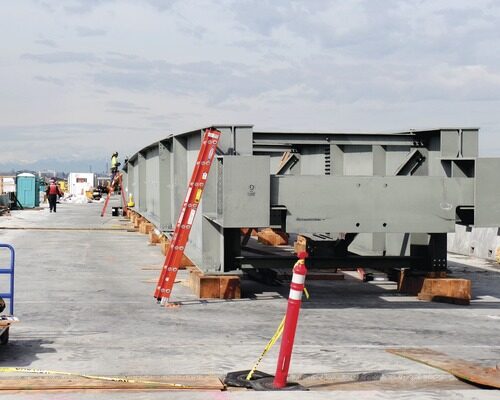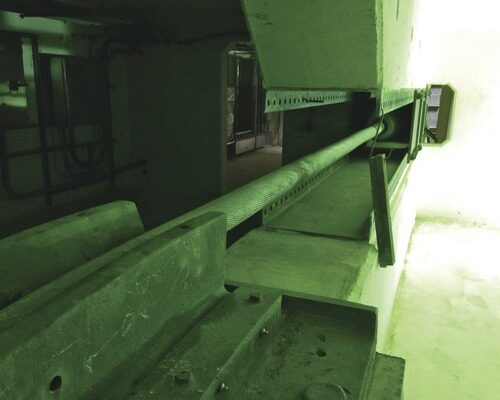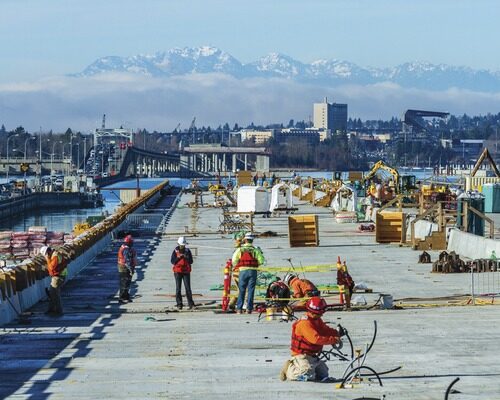The world's longest floating bridge will soon be eclipsed by a newer, longer span a few feet away on Lake Washington in Seattle.
As crews from Kiewit-General-Manson (KGM) move toward swinging the final 1,000 ft worth of concrete pontoons into place this July, the owner—Washington State Dept. of Transportation—looks toward opening this project in April 2016, a key component of a project worth $4.47 billion overall.
Moving the final "raft" of pontoons into position "will be a shock," says Adam Geyer, KGM superintendent. "There is still a lot of work, but that is a huge milestone. This thing is close to being done."
Gun lap for route upgrade
After 19 years of planning and five years of construction, less than a year remains until the ribbon-cutting for the 7,710-ft-long bridge, a completely updated version of the span drivers currently traverse on State Route 520 connecting Seattle to points east.
The floating bridge represents one part of the larger State Route 520 Bridge Replacement and HOV Program project that includes new land-based highway construction in Medina, the project's home base—work that wrapped in fall 2014—and improvements on the west side of the new bridge—some that is planned and some that is unfunded.
The floating bridge, though, remains the project's focal point. The new structure is slightly north of the existing bridge, which will be removed, utilizing historic right-of-way and avoiding concerns over a bay and protected wetlands. The distance between spans varies from 60 ft to 28 ft.
The old bridge, which opened in 1963, is overdue for replacement. In addition to seismic concerns, the four-lane structure bottlenecks traffic, and with a roadway sitting directly on pontoons, high-wind and high-wave weather events close the bridge. Any bridge or pontoon maintenance on a bridge with no shoulders also requires a closing of lanes.
"It has taken its pounding," says Dave Becher, WSDOT floating bridge and landings project director. "We have done a lot of retrofits, and at a certain point, you can keep putting money in, but not getting value out."
The new bridge is a significant upgrade. The size has changed, with six lanes and the ability to add light rail in the middle. To handle the increased load, the pontoons were designed to the largest dimensions possible to float from the casting site 578 nautical miles away in western Washington via the only possible channel—Seattle's Ballard Locks, with a total of 5 ft of leeway.




Post a comment to this article
Report Abusive Comment